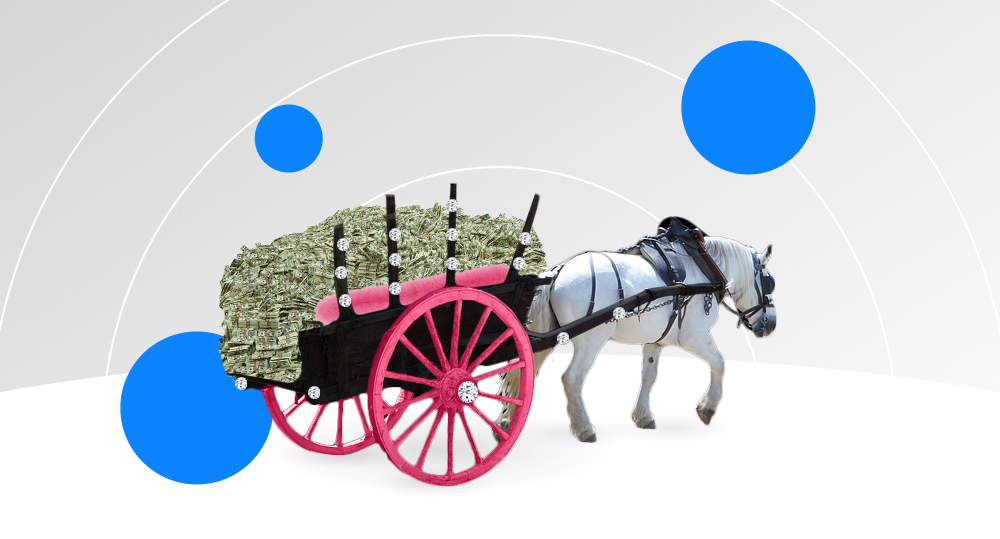Do you like unicorns? In business, unicorns are rare but real and represent a great example of a winning startup lifecycle that has reached and surpassed all its goals. The top three unicorns currently are ANT Group, ByteDance, and SpaceX. All these three leaders are valued at over $70 billion, and they are not going to stop.
We offer you our research of seven phases every startup passes. Moreover, we will also focus on some practical tips to turn your idea into a booming business.
WRITTEN BY:
Alexander Arabey
Director of Business Development, Qulix Systems
Contents
Startup Lifecycle Uncovered
Silicon Valley’s legendary entrepreneur Steve Blank defined a startup as a temporary organization designed to search for a repeatable and scalable business model. Any startup is created with the idea of future transformation into other forms of business. And each one of them will sooner or later come to an inevitable final phase. Your startup has equal chances to become a successful SMB, a large company, or even a majestic unicorn, or, sadly, be sent to the graveyard of business.
According to Statista, in 2021, there were 1,058 unicorns in the world. CB Insights found that the chances for a startup to become a unicorn are less than 1%. The harsh reality is that around 70% of tech startups fail — they manage to live about 20 months on average after their first financing.
That is why in our post, we will decode the life cycle that all startups have to undergo and will try to highlight possible bottlenecks in all the stages of development.
Phase 1 — Discovering the Solution
An idea is the root of every business. It can be born from your needs or the requests of your relatives and friends, for example. However, having a bright idea is not enough for success. It would help if you studied it in all aspects at the initial stage of every startup lifecycle.
First, you should define what specific problem your product or service will solve. It is also essential to estimate whether your solution is the most effective for this particular problem. Also, what you should understand is the reason for the market to accept your startup idea. Several practical steps can help you achieve that:
- Make sure that your solution is the best answer for the problem, in your opinion.
- Identify the target audience for your product or service and study it thoroughly.
- Ask people, your potential clients, what solutions for the problem they have already been using. Ask for their opinions about your solution.
- Mark the pain points of your target audience.
- Adapt your solution to the new needs and potential customers' opinions.
- Determine the preliminary sketch of requirements for the future prototype.
- Create landing pages to check the demand and generate leads.
Phase 2 — Pre-seed Round
This stage is closely interwoven with the previous one. However, there is always a definite moment in the startup life cycle when its founder has to make a commitment. It is a vital decision to risk a lot of things: your previous job and free time. Here you start transforming the idea into the project. And it requires an initial investment or pre-seed.
The pre-seed stage dramatically depends on the size and type of your product. According to PwC, 66% of European startups are initially based on self-funding. The excellent funding source comes from the people you know — family, friends, or your neighbors. Meanwhile, resource-heavy businesses need to look for external funding from the birth of the project. Some source ideas can be:
- Search the internet— turn to Crunchbase, Angel List, or Google to find entrepreneurs interested in startups like yours and contact as many of them as you can;
- Join pitch competitions/events — present your project at specialized events for startups;
- Get into an incubator — they provide not only funding, but also training courses, office space, and other business services;
- Get into an accelerator — their main focus is fast scaling, but some of them offer pre-seed capital.
Phase 3 — MVP Launch
When you have got the approval of your business ideas during the initial stages of your project, have committed to dedicating your resources to your future business, and/or have received initial funding, it is time for the first practical stage of the startup lifecycle. Test your hypothesis by building an MVP (minimum viable product). It is a simple version of your products to address the needs of your first clients and get valuable experience for the final development stage. The MVP minimizes risks and reduces costs for a startup.
For example, Richard Branson started his billion dollar business Virgin Air with just one plane flying only one route. It allowed Branson to test business hypotheses and work out further successful strategies.
Anyway, the primary purpose of the MVP in the startup lifecycle is to test the prototype with the target audience before proceeding to the next levels. So, we recommend using all possible customer communication channels for maximum feedback:
- Customer interviews — question your first customers about their opinions on the products, all possible issues, and letdowns.
- A/B tests — introduce two or more test versions and analyze your customers' interactions to choose the best MVP.
- Ad campaigns — start an advertising campaign in social media, on television, and use other resources to test your product idea and relevant customer reaction. You can use special analytical tools on such platforms as Facebook or Google.
- Crowdfunding campaigns — get honest feedback by presenting your MVP on a crowdfunding platform like GoFundMe, where your potential customers will vote for your products with their money.
Phase 4 — Seed Round
Do the customers like your project idea and the prototype? Then, proceed to the acquisition of additional investors. The primary purpose of the seed round is to get that precious support before the product is ready for the market at its best. Effective fundraising at this stage helps to achieve valuable advantages over competitors, such as hiring the best tech specialists and using powerful PR and marketing strategies.
At this stage, you have to prove to your future investors that your startup idea is ready to go to the next level. Here you will use the quantifiable data from the MVP stage — users' interest, revenue sources, and a working business model. It would help if you turned to angel investors, crowdfunding platforms, or early-stage venture capitalists (micro VCs) to persuade them with your idea, product, and customer acquisition.
The most common seed mechanisms are:
- Common stock — when you provide your investors with equal rights as existing owners;
- Preferred stock — when the holder gets preferential rights above the common stock;
- Convertible note — when your company issues a debt instrument to the investors with an interest rate and repayment time;
- SAFE (Simple Agreement for Future Equity) — when your investors get a warrant to purchase equity shares during future financing rounds.
Phase 5 — Reaching Product/Market Fit
When you convince your investors that you have the legs to go the distance and get funding for your project, you should start polishing the products. Product/Market Fit or PMF for a startup means being in a good market with the best products to satisfy this market. The measure for this stage is a retention rate, which indicates customer approval and loyalty towards the project. If your customers return to your products and recommend them to their relatives and friends — you are on the right track.
Andrew Chen, a successful venture capitalist, suggests clarifying five essential questions about your product at this stage:
- Do your potential customers indicate any interest in switching to your product?
- Did any of them decide to reject your competitors' products and prefer yours?
- Do customers group your product with the corresponding competitive offerings?
- Do they specify the unique features of your offer?
- Where is your product in comparison with the competitors?
There are three main channels to focus on at this stage: language-market fit, funnel optimization, and channel-product fit. Let us review them briefly.
- Language-market fit shows the most effective ways of addressing your target audience.
- Funnel optimization helps to find the silver bullet for your product by experimenting with the combination of user experience elements: you should try to remove or, at least, reduce any points of confusion.
- Channel-product fit provides your startup with the possible channels of distributing the product and reaching the customers.
One of the main features of PMF is to be as specific as possible and polish your product with a clear view of the needs and expectations of your target audience.
What should a startup have at the end of this stage? The working product, extraordinary marketing processes, and a proven business model. Isn't it better to stop here and enjoy the profit? No, it is not. For startups, it is crucial to be ready for the following stage — perspective growth or scaling.
Phase 6 — Scaling
How to understand that your project is ready to be scaled? The leading indicators are channels for distributing the product. When they reach their limits, your business model will stop developing. On the other hand, it is pivotal not to rush the expansion of your startup. Otherwise, it can lead to burnout or even the destruction of your brand image.
For any startup, scaling the distribution channels is the stage of transformation into the actual business. You hire more experts, build your team and company culture, find outsourcing partners and look for significant investments from venture capitalists for a long-run period. One more essential aim of scaling can be internationalizing your startup to fit into the New Normal.
Phase 7 — Exit
So, we got to the final stage of the startup lifecycle — the inescapable finish of this race. All successful startups come to the final choice between two alternatives. You can:
- Sell the startup — the buyers for tech projects can be giant companies like Alphabet, Meta, or Apple;
- Launch an IPO (initial public offering) — sell the company shares to a private individual or institutional investors.
The last phase pours vast resources into the project and ensures its future growth, products upgrade, and company update to fit the dynamic markets.
Wrap-up
We've guided you through all the phases in the startup lifecycle. We believe that it is essential for business owners to clearly understand the exact stage of their startup to stay motivated and focused when things get tough. In addition, remember the last set of our insight tips:
- Stay calm — avoid the temptation to cut corners on your way to the subsequent phases of the startup lifecycle; if you are not fully prepared, you may lose the game to your competitors;
- Mind your business — remember that all startups are unique and concentrate on your trajectory, learning from other companies' experiences;
- Give priority to your customers — pay special attention to your clients at all the stages of your startup lifecycle; above all, without them, your company will have no chances to stay alive.
Check out our blog to get the latest insights about startups, cryptocurrency, fintech innovations, and other great posts. And contact our specialists for professional consulting on your startup development.

Contacts
Feel free to get in touch with us! Use this contact form for an ASAP response.
Call us at +44 151 528 8015
E-mail us at request@qulix.com













